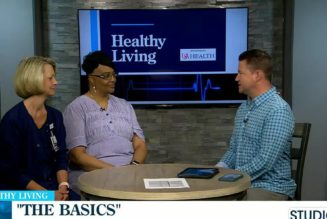
As you age, it’s natural for your body to begin declining. From decreased bone density to heart disease to memory loss, there are many health impacts of aging. While we can’t prevent all the signs and symptoms of aging, we can take steps to nourish our bodies to help slow down or even potentially prevent certain health conditions.
-
While cardiovascular disease is the leading cause of death worldwide, as we age, there are many health conditions to be aware of. Stick to a healthy diet and exercise frequently to prevent and reduce the risk.
-
It’s best to consult a doctor before starting any new diet or exercise program to discuss your best options and ensure no negative interactions with medications you may be taking.
-
Although following a healthy lifestyle means only consuming certain foods, there are still many options for those who want to indulge in a healthy manner and stay heart-healthy.
If you’re looking to increase your longevity (especially as you begin to age), one of the most essential things you can do is learn to eat the best foods for your body.
Cardiovascular disease is currently the leading cause of death in the world. There are several risk factors, including high blood pressure, high low-density lipoprotein (LDL) cholesterol, diabetes, obesity, unhealthy diet, and lack of exercise. While a woman’s risk of having a heart attack increases after 50, a man’s chance significantly increases around age 45. A healthy diet in combination with frequent exercise is the best prevention you can do to improve your health and prevent (numerous) diseases. Not quite sure where to start? Here are some tips to get you going in the right direction.
Reduce the amount of saturated fat in your meat sources
It is important to reduce the amount of saturated fat in your diet, and your meat sources are one way to do that.
- Select lean cuts of beef with minimal visible fat. Lean beef cuts include the round, chuck, sirloin, or loin.
- Select lean or extra lean ground beef. Lean ground beef is one with a fat content that is at least 92% lean.
- Trim your meat. Cut off all visible fat from meat before cooking.
- Go skinless. Remove skin from chicken or turkey before cooking.
- Limit or avoid processed meats. Processed meats are high in saturated fat.
Protein sources to consider:
Some protein sources to consider:
- Chicken
- Turkey
- Salmon
- Shellfish (shrimp, lobster, scallops, etc.)
- Tuna
- Pork shoulder
- Beef sirloin
- Lean ground turkey/beef (at least 93% lean)
Bad fats vs. good fats
When you see fat on a nutrition label, you may automatically categorize it as bad, but not all fat is harmful when it comes to a healthy diet. Fat is a source of essential fatty acids, and because your body cannot make it on its own, you need to consume a certain amount to absorb Vitamins A, D, and E.
Dietary fat plays a prominent role in cholesterol levels, and whether you have HDL (good cholesterol) or LDL (bad cholesterol) is significantly set on the types of fat you consume. Monounsaturated fats such as olive oil, avocados, olives, and nuts (peanuts, almonds, pecans, and cashews) are all great examples to enjoy for good heart health. Be cautious of how many nuts you’re consuming, as they can easily be overeaten, and some are higher in saturated fat than others.
Polyunsaturated fats are also a healthy source of good cholesterol and heart health. Some options to enjoy include seeds (pumpkin, chia, flax), fatty fish such as salmon, tuna, and mackerel, and soy products like soy milk and tofu.
Alongside healthy fats are oils, which are just as vital to a heart-healthy diet. Just one tablespoon of butter contains seven grams of saturated fat (approximately 35% of your daily value). A much healthier alternative, olive oil, for example, only has 1.86 grams of saturated fat per 1 tablespoon. It also contains 9.86 grams of monounsaturated fat and 1.42 grams of polyunsaturated fats.
All of these foods are incredibly heart-healthy and will significantly improve your cholesterol levels. In addition, be sure to avoid trans fats and saturated fats, as they will increase cholesterol levels, clog up your arteries, and lead to cardiovascular disease.
Use lower dairy fats
Whole milk dairy products often contain high levels of saturated fat, which can easily lead to cholesterol problems and increase your risk of cardiovascular disease. Twenty-two cohort studies were analyzed to see if there was a change between low-fat dairy and whole-fat dairy. Researchers found that in terms of heart disease and stroke, low-fat dairy intake (as opposed to full-fat) was associated with a reduced risk of total cardiovascular disease and stroke. Low-fat or fat-free milk can be substituted in many recipes, such as soups, stews, and other sauces that require heavier dairy.
Increase your fiber intake
Both soluble and insoluble fiber are great for preventing heart disease, specifically lowering blood pressure and cholesterol.
Some good sources of fiber include:
- Whole-grain bread
- Oatmeal
- Barley
- Brown rice/brown rice pasta
- Veggies that are high in fiber (collard greens, broccoli, carrots, artichokes)
Heart-healthy recipes
There are endless recipes to start your journey on a heart-healthy lifestyle. Here are a few heart-healthy recipes to get you started.
Tomato feta shrimp pasta (Serves 2)
The ingredients you will need:
| – | Olive oil spray |
| 1/4 cup | Finely chopped sweet onion |
| 1 tablespoon | Freshly minced garlic |
| 1 tablespoon | Finely chopped fresh oregano |
| 14 ounces | No-salt-added Italian cherry tomatoes (whole cherry tomatoes or tomatoes in purée) |
| 1/8 tablespoon | Sea salt or reduced-sodium salt substitute |
| – | Freshly ground black pepper, to taste |
| 2 tablespoons | Finely chopped mint |
| 2 tablespoons | Extra virgin olive oil |
| 8 ounces | Extra-large shrimp (21 to 25+), preferably wild-caught, peeled, and deveined |
| 1 ounce (1/4 cup) | Crumbled light feta cheese |
| 1/3 cup | Coarsely chopped flat-leaf parsley leaves |
| 4 ounces | Uncooked green lentil pasta or 3 ounces high-fiber, whole grain rotini or penne |
Follow these steps to make the tomato feta shrimp pasta:
- Preheat oven to 450 °F.
- Bring large pot of water to a boil. Add salt to taste.
- Mist a medium-sized, ovenproof frying pan with olive oil spray.
- Over medium heat, add onion, garlic, and oregano.
- Cook, stirring occasionally, until fragrant (about 2 to 3 minutes).
- Stir in tomatoes, sea salt or salt substitute, and pepper. Turn the heat to medium-high.
- Stir constantly until the tomatoes become jam-like (5 to 7 minutes).
- Turn off heat. Add in mint, olive oil, and shrimp. Ensure shrimp are in single layer and covered by sauce.
- Sprinkle cheese and parsley on top.
- Put pan in oven. Bake until shrimp in the center of the pan have plumped and are no longer translucent in the center, and the cheese is melty (8 to 14 minutes).
- While shrimp are baking, cook pasta according to package directions.
Slow-roasted Mediterranean fish
The ingredients you will need:
| 1 1/4 pound | Fish filet (suggested: barramundi, halibut, salmon) |
| 2 tablespoons | Extra-virgin olive oil, divided |
| – | Kosher salt and black pepper, to taste |
| 1 cup | Cherry tomatoes |
| 1/2 | Red onion, thinly sliced |
| 1/2 cup | Olives, sliced |
| 1/2 teaspoon | Oregano |
Follow these steps to make slow-roasted Mediterranean fish:
- Preheat oven to 250 °F.
- Pour 1 tablespoon of olive oil into a baking dish large enough to hold your filet and vegetables.
- Season the filet with salt and pepper.
- Add tomatoes, onions, and olives over the filet and pour remaining oil on top. Sprinkle with oregano.
- Bake until the fish reaches an internal temperature of 120 °F (about 15 minutes, depending on filet thickness).
Heart-healthy living starts with understanding your risk for developing heart disease and taking proactive steps to reduce it. Eating heart-healthy foods, engaging in physical activity, and taking medications as prescribed can all help to reduce your chances of having a heart attack or other cardiovascular event.
Additionally, by understanding your personal risk factors and taking preventive measures, you can improve your overall health and well-being. Heart-healthy living requires dedication and understanding, but the rewards of improved health are well worth the effort.









